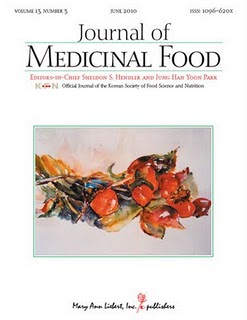J Med Food[1], 2011 Aug 3
Royal jelly (RJ) is a honeybee product containing proteins, carbohydrates, fats, free amino acids, vitamins, and minerals. As its principal unsaturated fatty acid, RJ contains 10-hydroxy-2-decenoic acid (10-HDA), which may have antitumor and antibacterial activity and a capacity to stimulate collagen production.
RJ has attracted interest in various parts of the world for its pharmacological properties. However, the effects of RJ on ultraviolet (UV)-induced photoaging of the skin have not been reported.
In this study we measured the 10-HDA content of RJ by high-performance liquid chromatography and tested the effects of RJ on UVB-induced skin photoaging in normal human dermal fibroblasts. The effects of RJ and 10-HDA on UVB-induced photoaging were tested by measuring procollagen type I, transforming growth factor (TGF)-β1, and matrix metalloproteinase (MMP)-1 after UVB irradiation.
The RJ contained about 0.211% 10-HDA. The UVB-irradiated human skin fibroblasts treated with RJ and 10-HDA had increased procollagen type I and TGF-β1 productions, but the level of MMP-1 was not changed.
Thus RJ may potentially protect the skin from UVB-induced photoaging by enhancing collagen production.
References
- ^ J Med Food (www.liebertonline.com)
